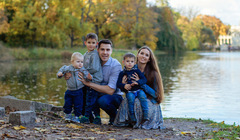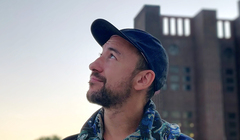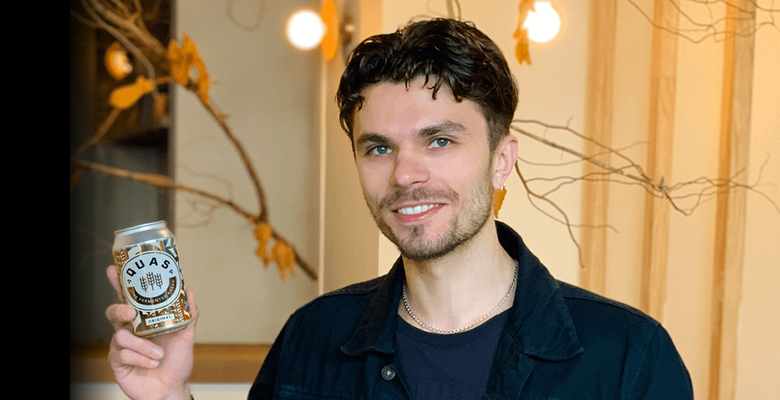
Estonian-born Edinburgh University graduate Anton Puzorjov, who has already defended his doctoral thesis on biotechnology in the Scottish capital, has an occupation which, at first sight, is a little out of the ordinary; he is attempting to cultivate a taste for the traditional Eastern European fermented beverage kvass amongst the British public. At first sight, this would seem to be yet another attempt to play the exoticism card. But all is not so straightforward… A correspondent of Kommersant UK met Anton and heard the fascinating tale of a unique product in which personal choice, scientific interest, ethical considerations, curiosity and unbelievable stubbornness all played a role.
Why kvass? We’ve all heard of the success of Natasha Bowes Biotiful kefir. Were you trying to repeat her success?
Actually, I didn’t know about that particular kefir until I started researching the market for my own ends. I’ve always liked kvass, I have lots of great memories of it from childhood. It so happened that I came here to Britain to study Biotechnology. After two years of study at the university, I decided to stop drinking alcohol. Before that, I drank extremely rarely because I was doing semi-professional light athletics (I’ve been an Estonian light athletics champion eight times). And so in my second year at university, I decided to forgo alcohol completely.
An awkward step in Britain from the perspective of socialisation.
I wanted to challenge myself and I wondered how it would turn out. Was it possible to build up a successful business without using alcohol as a form of communication? But I haven’t drunk for eight years now and I’ve spent the last ten and a half years in an academic sphere. In that initial period, all social occasions were painful; just how much orange juice, water and tea could anyone drink? But I understood that it was my personal decision, so I didn’t complain. And in 2015 some local guy started to make a non-alcoholic drink which was sold in glass bottles like beer. It was such an inspiration for me! I remember finding that guy on LinkedIn. I expressed my gratitude and said how glad I was to be able to hold that glass bottle which looked like it was for beer and enjoy a new taste. Unfortunately, he didn’t get back to me. Of course, at the time I wasn’t considering starting a business producing any kind of drinks at all. It was only two years later that I started my first project, an online marketplace for charity shops. The process of creating this business taught me a lot. But I ended up getting into business in the same year and month as I began work on my doctoral thesis on biotechnology, which had absolutely nothing to do with charity or programming.
What was your thesis about?
To put it briefly, it was about the production of a naturally occurring pigment from cyanobacteria. These bacteria are capable of photosynthesis. The well-known food supplement spirulina is produced from them. Spirulina contains the only natural cyan pigment which is soluble in water; it can only be extracted from this source. But the snag is that the pigment itself is a protein which, in unfavourable conditions, loses its colour and degrades; this property greatly limits its use in the industry. My doctoral thesis aimed to improve the properties of this pigment to make it more stable for longer periods in different conditions and temperatures. I was able to achieve stability at 65 degrees, compared to the initial 45. I tried very hard to make sure my work wouldn’t just be consigned to a drawer somewhere, so, while I was doing my thesis, I published four scientific articles in influential journals where I was listed as the primary author who had conducted all the work, carried out the experiments, done the analysis and written the text. These articles are open access and they are constantly being cited. I’m glad that, although I began a business in a completely different area, I have still added my modest input to science. My achievement cost me a lot of sweat and tears, but it’s the best way to learn. My aim was to become a real scientist over the course of doing my PhD and to understand how the innovation process works. I am very glad that I was at an institution known for its rigorous scientific approach. Edinburgh is still worthy of its place as the 15th-highest-ranking university in the world.
Did business knowledge help you to write your thesis? A qualification in biotechnology is probably not very useful when creating an online marketplace for charity shops.
Business experience really helps when writing a thesis. You need to manage a project, identify priorities, make decisions based on experimentation and even find the right marketing approach. What’s more, this business was a valuable experience for me; it demonstrated that an attempt to make the world better for its own sake was not enough. We launched the project by doing a little trial run at first. This lasted about a week, during which time we gathered some very good data, which we used to receive more grants and financing. This came both from the university and local startup contests. Then we started to build the complete platform, which we released together with some Edinburgh charity shops. I had a team of 11 people working for me for 12 months. Three of them worked full-time while I was doing my PhD.
Also full time…
It was wild. One of the things I keep going back to in my mind is how I pulled it off without being thrown out of university. I can’t understand it. But essentially, we launched it and 12 months later, we had all the data, based on which I could say that the business wasn’t working. I went back to my plans to try to find a mistake and I found a profusion of them. But it was my first real business, and, like everyone else, I made a lot of missteps which I learned from later. Besides, the second year of my PhD was coming to an end and I just couldn’t stretch things out any more, I had to decide what to do next. At the time, my girlfriend said to me: “Anton, I’ve known you for five years and helping charity shops has never been your dream”. I reflected on this and realised that, actually, she was right. I had seen an opportunity to make the world a bit better and tried to make my ideas a reality. I had really wanted the experience of creating a business, but it wasn’t my mission. I saw my mission as directly linked to biology, I truly believe that biology and biotechnology are directly affecting our present and will affect our future. So I had to wind up my first business.
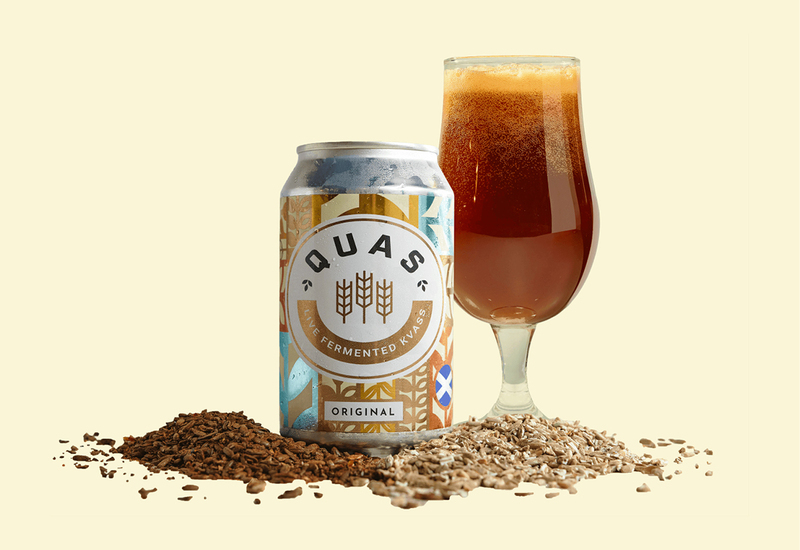
And was it then that the kvass started?
When I closed my business (I took this tough decision in the summer of 2019), I was set free. I started to work solely on my PhD and the amount of free time I had was just unbelievable. I didn’t know what to do with it, so, because it was the third year, the most important for composing the dissertation, I poured it all into my thesis from morning to night. For a couple of months, I felt great, but then my brain started to feel that it was missing something. It needed to be constantly occupied, with some kind of activity and, however, I pushed at it, my dissertation just wouldn’t progress any faster. You see, because of the nature of the scientific process, it’s not possible to speed everything up. I started to study Spanish. I liked this simple process; you learned a word and you immediately felt the result. Nine months passed like this and then I realised that I was badly missing running a business. To make matters more pressing, I only had one year left to try again before the end of my course. The thing is that the university environment in Britain is an excellent place to start a business. At least, Edinburgh University and Scotland as a whole are. There is amazing support, you can get financing and so forth. Anyway, in the summer of 2020, during the Coronavirus pandemic, I flew to Tallinn and I was standing in the airport when I saw some kvass in the shop. And I thought “I really like kvass! Why don’t we have it on wider sale in Britain?”. Then I remembered my relationship to alcohol and that kvass is a product of fermentation, which is a biotechnological process... And I thought: “Let’s have a dig around, maybe I’m not the only weirdo who doesn’t drink alcohol”. I returned to Britain, I started to investigate and I realised that I wasn't alone and the non-alcoholic drinks market was growing at a rate of 50% a year. Generation Z drinks less alcohol than any generation before. For me, this was an incredible discovery and, I realised, it was quite auspicious. I started to write some entries for local competitions for the best startup ideas, you see, at our university, they hold them virtually every month and there's a chance of winning £200 or £150 here and there. At the same time, I began studying the process of kvass production. This was fun because kvass is one of those products which every housewife has her own recipe for, and as a scientist, I had to find the best one.
But couldn't you have taken a lead from the Soviet GOST standards?
Soviet standards were used in the past and some products still conform to them. But I didn’t have access either to the ingredients necessary for those standards or to the same bacteria and yeast. For instance, it’s impossible to find malt of the right kind in Britain. I was doing everything at home and really on the fly. During the last year, when I was writing my thesis, I would come home at ten o’clock at night and find myself doing the most bizarre things…you see, every day I would try to get at least a modicum closer to my goal, by doing experiments of some kind, and at the time, I was renting a room in a flat with just a tiny kitchen and no living room. As I remember it now, on my table I had a two-litre jar, within which there was something bubbly and not unlike kvass. And in the gloom, at one o’clock in the morning, I’d be there using a little tube to syphon liquid into black plastic bottles on the floor. Often at those moments, the same two questions would come to me; “What am I doing with my life and what’s the point?” I don’t know how many evenings I killed in this fashion, but there were months of pouring liquid from one container to another.
Why were the bottles black and why were you doing it in the dark?
There are many ways to ferment kvass and I chose a two-stage method. The first stage, fermentation itself, takes place in a jar. The second stage, carbonisation, when the liquid is filled with bubbles, happens in a bottle. In practice, transparent bottles are rarely used for beer and other fermented products because the action of ultraviolet light changes the parameters of the taste. But at the time, I just didn’t have any other options; I was doing it in the dark because it was one o’clock in the morning, and the bottles were black because they were the only ones I had managed to find.
How much sugar is there in your product? We’ve all noticed that the kvass which is delivered to Eastern European shops in Britain is excessively sweet. Is sugar necessary for fermentation?
Let’s start by saying that everyone has their own ideas about how kvass should taste. Many people only know and have only tried bottled kvass from shops, which really does contain a lot of sugar. An awful lot, from about 6.5 to 10 grams per 100 ml. Basically, it’s Coca-Cola with a bready taste. And there’s a whole backstory explaining why it’s turned out this way; kvass producers were having to compete with this cola, their production was slower, their product’s shelf-life was shorter and people preferred sweeter drinks anyway. All this affected the kind of kvass we now have. But as a biologist, I have a very unforgiving attitude to sugar. I understand that it is an enormous stimulus for our brains, but the quantity of sugar which we now consume and how it affects our thought processes, everyday lives, teeth, overall health and brains is pretty horrifying. So from the very start, I set the aim of making kvass with the minimum possible level of sweetness. Unfortunately, sugar is a necessary fuel for the yeast and beneficial bacteria during fermentation, so there is always going to be a certain amount of it in kvass. But in ours, there are two or even three times less than in the bottles you can find in the shops. I’ve sifted through several hundred patented formulae for kvass production and, unfortunately, most often they look as if their aim is to make a liquid which smells like kvass and can be produced on the minimum possible budget. How can you drink that? And how can you sell it with a clear conscience? I just don’t know.
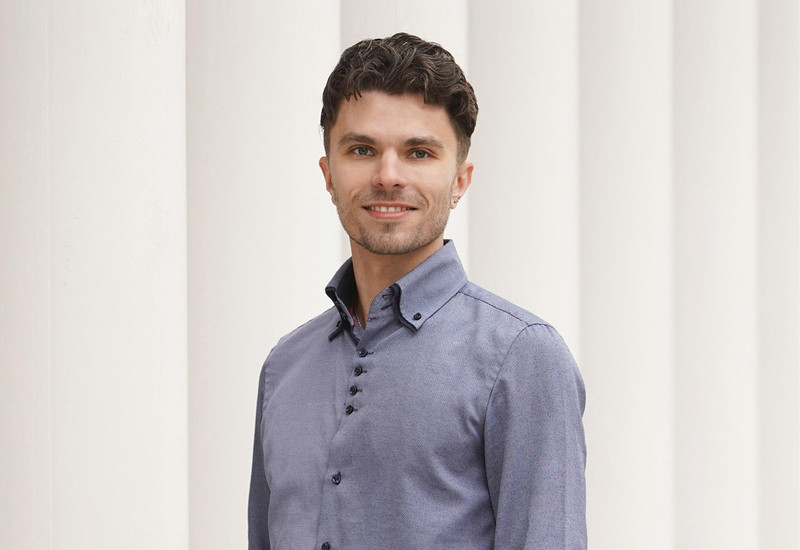
And now you’re canning it. When did you find the resources for this production?
I remember using my first £100 to buy measuring equipment, bottles and ingredients to start development. On the basis of my first results, I was able to receive some modest funding from the university for the purchase of good quality equipment. An acquaintance helped me find the premises in which I ended up setting up small-scale production. And now we are producing around a thousand litres a month. The idea came to my mind in the summer of 2020 and the first can which I was able to hand to a client was pressed in October 2021. A lot of time was spent testing the cans. Everyone said that it was impossible because it is a fermented, live product so it would explode if it wasn’t kept in the fridge. I understood this well. So before we sold the first can, I experimented with the fermentation process, the conditions, the temperature settings etc, to make sure everything was safe. It was a real scientific process.
But before going into production, you probably had to be checked and receive a hygiene certificate…
Yes, we passed all the tests. The thing was that as our product contained no alcohol, it didn’t require the additional permits necessary for beer or wine. For these, every litre has to be accounted for and excise duty must be paid. Also, kvass isn’t a high-risk product such as dairy, meat and fish. These have to pass extremely stringent testing. Although again, we didn’t know anything about this at the time, we had to find it all out as we went along. But the short version is that we were lucky because kvass hadn’t been included on the high-risk list.
And can your product be bought in shops? Or is it only available online?
I’m very pleased to be able to tell you that, literally a couple of weeks ago, we sent our first order to the Dacha chain of stores in London. They have three locations down there and in two of them, one in Fulham and the other on Moscow Road, from this week on you can already find our kvass. And in Edinburgh, for a year and a half, we have been supplying kvass to Hendersons, one of the best vegan restaurants. It sells there better than kombucha. However, we are mainly concentrating our efforts on online sales since our target audience is scattered across the British Isles. Via the site, people often order variety packs of five bottles of different flavours of kvass to try and then, at a good discount, they sign up for online subscriptions for the delivery of fresh kvass every few weeks.
Currently, our real live kvass is available in four types. The first is the original kvass, which is a traditional bread kvass made from rye and barley with the use of a lactic acid starter. Incidentally, since it’s a live product, the carbonisation varies depending on the length of time you keep it in the fridge (before it’s opened, of course): the longer it’s in there the more bubbles there’ll be. Next is ginger kvass, which I had never tried until I created it. I was inspired by British gingerbread, I really loved this during my student days so I decided to try to develop Ginger Quas. Using the base of bread kvass, we add 10 grams of freshly- squeezed ginger juice to each can. The ginger then ferments, producing this drink. By the way, the ginger kick can vary from can to can because all ginger is a bit different, although the quantity of juice is always identical. This particular kvass received a Gold Star at the Great Taste Awards, the largest independent prize in the global food industry. We were selected in blind testing from amongst 15,000 participants. There is also the seasonal, summer version, which we only launched last year, this is with mint, raspberry and blackberry. We tried ten different varieties and sent samples to our best clients and they gave us feedback. Now we’ve dispatched the last batch of this kvass for the year; it’ll be replaced by a winter flavour, with spices such as cinnamon, cardamom, cloves, allspice, nutmeg and orange zest.
The main answer to the question of why we’re not yet in more shops is because we’re doing everything off our own backs and it’s mostly my own effort. My business consultant assures me that it’s time to launch the product on the world market and for that, we need to progress to the stage of seeking serious investors and partners. So, at the start of the next year, we’re going to actively start looking for them. It would also be interesting to find partners for serious research, for instance, into the subject of which live bacteria in kvass affect the microflora of the gut and the body as a whole, as well as how they influence health indicators and the immune system. This can all be measured but the research requires significant funding. When I realised that this was such an enormous subject and an unploughed field, I had a choice; either to ensconce myself in the lab and start poking around or to bring my product out onto the market, see how it goes and study it gradually whilst all that is happening. So I’ve ended up making the product available to the public.
Author
Vera Shcherbina

